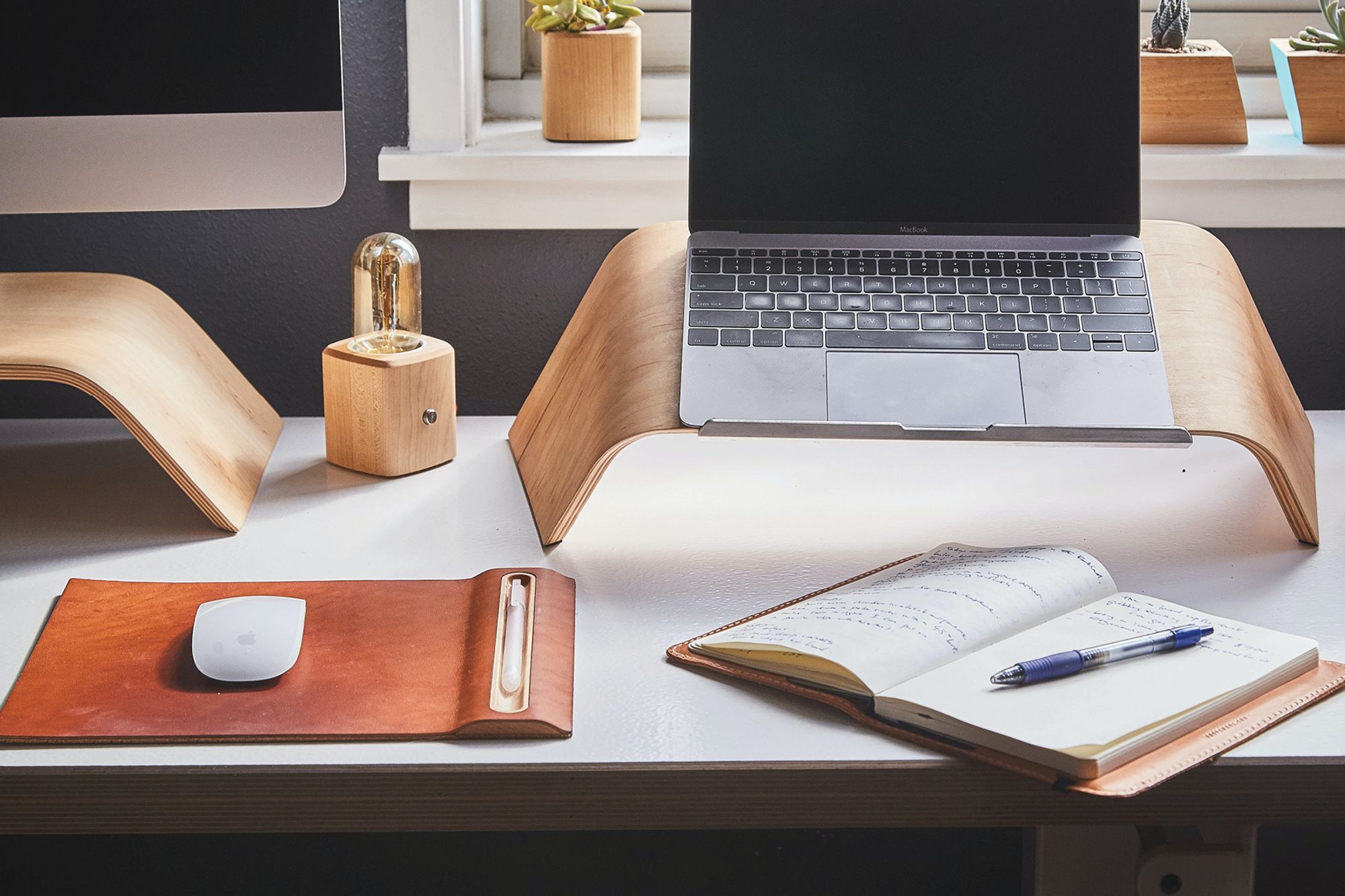
How to Create the Perfect Workspace in Your Upper North Shore Home
The home office trend exploded during the pandemic, and there are no signs of it going away anytime soon. Whether your place is roomy or cosy, you can create the perfect workspace in your Upper North Shore home.
The work-from-home revolution
The pandemic ushered in the working from home era, and although lockdowns are now behind us, working from home is here to stay. The 2021 Census, conducted during one of Sydney’s lockdowns, revealed that 46.9% of Hornsby LGA locals and 54.8% of Ku-ring-gai LGA residents were working from home. But, as we know, workers did not all return to the office once the lockdown was over. A Statista survey revealed that 46.7% of NSW workers were still working from home in March 2022 and 31.4% in September. Recently, the Community and Public Sector Union – representing one of the country’s biggest workforces – has demanded unlimited flexibility to work from home in a move that could create a new benchmark for our nation’s office culture.
It’s no surprise, then, that homebuyers and tenants are seeking homes with a dedicated study, office or work-from-home area. In April and May 2020, when the pandemic first hit, Domain reported that searches for the term ‘home office’ in NSW exploded by 146%. And the desire for a study or home office has remained high ever since. Realestate.com.au data shows that the number of ‘buy’ searches for the terms ‘study’ or ‘office’ grew by 25.5% between Q3 2021 and Q3 2022, while ‘rent’ searches for the same terms increased by 12.5%. As Anna Flaherty, an economist at realestate.com.au, says, “Among both buyers and renters, searches pertaining to home offices have risen to new highs.”
Architects and designers recognise the demand for studies and offices, too, with Vogue Living predicting that dedicated space for working and studying will remain at the top of home design wish lists for some time to come.
What makes a good home office?
While an at-home workspace can be anything from a modest desk tucked into the corner of a bedroom to a fully equipped freestanding office in the backyard, the design principles common to effective home workspaces are universal. Comfortable, ergonomic furniture, a good source of light (whether natural or not), access to power and Wi-Fi, and adequate equipment (such as computers and monitors) are non-negotiable. Transform your home office from standard to inspiring with the astute use of design elements like colour, stylish furniture, clever storage and sustainable touches like refillable ink cartridges and rechargeable batteries. Consider adding indoor plants, chic desk accessories and statement pieces like a standout chair or a feature wall using textured wallpaper to take your workspace to the next level.
Study nooks
You don’t have to live in a mansion to have a dedicated work-from-home space. A study nook is the perfect option for apartments townhouses or any home where you don’t want to give up a bedroom for a home office. You can set up a study nook in the smallest of spaces, such as a hallway, under a staircase, on a landing, in an unused corner or along a wall.
Constructing a desk surface with custom joinery is a stylish and space-efficient way to transform an unused area into a study nook. Otherwise, try a slimline desk. Long desk areas can accommodate a worker or student at either end. Shelving and cupboards above the desk area help keep the study area’s footprint to a minimum. You could even consider a sliding panel door to separate the nook from adjoining spaces.
Multipurpose spaces
Many homeowners and tenants opt to turn a bedroom into a study or home office, which gives them the space they need to work or study but means the room can’t be used for other purposes. Why not make your space work harder and convert your spare room into a multifunctional space? Sunrooms can become offices, studies can also be guest rooms, and workspaces can double as media rooms or studios on weekends.
The trick to creating an effective multipurpose space is to make sure the workspace componentdoesn’t scream ‘office’. One way to make sure that doesn’t happen is to choose your work chair carefully. Strike a balance between the support and comfort you’ll need to sit and work all day and a style that fits the rest of your home. Installing hidden storage, like drawers and cupboards, means you can tuck all the detritus of your workday away when you want to use the space at other times. Find solutions to bundle up cords and chargers and keep them out of sight, too. Artworks and knick knacks or objetsd’arts above and on your desk can help relieve the workaday feel, too. Continuing the colour and texture of the rest of the room in your work area (via paint and joinery colours, wall treatments, and so on) can also help workspaces blend into multipurpose rooms.
Building an office in your garden
Many Upper North Shore homes are blessed with spacious gardens, and it could be the perfect spot for a home office. There’s a growing trend of people building standalone studies and offices in their backyards, and it’s easy to see why. Having a separate backyard office means you can work undisturbed away from the rest of the family. At the end of the work day, you can establish that much-needed work/life balance by closing the door on your office and leaving it behind when you return to the house. You’re also not sacrificing any internal areas or rooms for the sake of your workspace.
You don’t need a huge outdoor space to build an office. Standalone backyard offices range from around 3m x 3m to 7m x 5m. You can design your own or select one from a supplier; choose from DIY or have it installed. Some include a bathroom and kitchenette, too. The options are almost endless. Whether or not you need council approval to build an office in your backyard depends on what you include; check with your council before you start work.
What about the kids?
Of course, it’s not just adults who need a workspace at home. There are more than 34,000 primary, high school and university students living in the Ku-ring-gai LGA and more than 38,000 in the Hornsby LGA, and they all need somewhere to study and complete their homework and assignments. A dedicated study space can help your child focus and stay organised. The key to creating an effective homework area is comfort. If your child is comfortable, they’re more likely to stay put and get the job done. A comfy but supportive chair is a great start. Natural light is said to aid concentration, so situating the homework area near a window is ideal. If that’s not an option (or your student is a night owl), invest in dedicated task lighting, like a desk lamp. Minimise distractions (and excuses to leave the desk) by installing storage like files, drawers and cupboards to keep clutter under control and stationary essentials to hand. And don’t forget their mood! Keep the vibes positive and inspiring with a pinboard, corkboard, chalkboard or whiteboard behind the desk – your student can decorate it with things that matter to them, as well as display workthey’re proud of.
If you’re looking to buy, sell, invest or rent a home with (or without) a home office on the Upper North Shore, we can help. Get in touch with our expert local team today.
DiJones Real Estate, together with their directors, officers, employees and agents have used their best endeavours to ensure the information passed on in this document is accurate. However, you must make your own enquiries in relation to the information contained in this document and seek advice from your financial advisor, broker or accountant to ascertain its application to your circumstances.
This information is provided subject to our Terms and Conditions.
Why downsize?
The two most common reasons for downsizing are lifestyle changes and financial factors 3.
Lifestyle changes For some, maintaining a large house and garden becomes a burden they no longer want to shoulder. Others decide to move to a different area to be close to family, work or lifestyle locations.
In either case, the decision to move often means choosing to live in a smaller home. And it’s not just empty nesters and retirees who decide to downsize. Many younger families find themselves streamlining their housing choices so they can afford to move closer to work or into a specific school catchment zone or lifestyle region.
Financial factors Moving to a smaller home can also have significant financial benefits. The reduced costs associated with maintaining a smaller property, including lower energy bills and rates, can mean serious savings and selling a large home may also give you the opportunity to increase your cash flow or even live mortgage free.
For those aged over 55, new legislation brought in on the first of January 2023 also allows you to make a $300,000 contribution ($600,000 for a couple) from the sale of your family home to your superannuation, which has been touted as “an important way for Australians to boost their retirement savings.” 4
Whatever the reason for choosing to move to a smaller home, here are five important strategies to minimise the financial, emotional and practical impacts of downsizing.
1. Plan carefully
Understanding the process, planning ahead and seeking the best professional advice will set you up for a successful downsizing experience.
Chat to your legal and financial advisors, then turn to your trusted real estate agent to help you navigate the sale of your old home and purchase a new property.
If you sell your old home before you buy, you may need to find an interim rental property or storage facilities. On the other hand, if you choose to buy before you sell, you may need to organise bridging finance.
Planning your move is a highly personal process, and it’s something you should discuss with your advisors and family before you start the ball rolling.
2. Giving yourself time to declutter
Moving to a smaller property almost inevitably means having to part with some furniture and other treasured possessions that you have accumulated over the years. This can be a challenging, emotional process, and one you should give yourself time to deal with.
The earlier you start, the better. Be pragmatic and methodical, working through your home in small sections and deciding what you can’t live without.
Sell or donate pieces you are sure you won’t need, then consider placing things you are unsure about into storage until you are in your new home. Once you’ve settled in, you’ll have a better idea about what fits with your new lifestyle and what doesn’t.
3. Don't be afraid to ask for help
Moving out of your family home can be an emotional process. Family and friends can offer practical and emotional support and help you deal with some of the challenges of downsizing.
Sorting through belongings, celebrating your experiences in the home and talking about the future with them will help ease you through the process.
They can also offer practical help with packing, cleaning, rehoming excess furniture, or simply making a good cuppa on a difficult day.
4. Hire cleaners and professional movers
Professional services are also a huge help when it comes to the practicalities of moving. If you can, get professional cleaners into both your old and new homes to get them looking their best.
A reputable moving company is also a must, especially if you have large pieces of furniture. Some companies offer full-service options, which can take a lot of the worry and stress out of moving.
In any case, one thing you should do is pack a few small boxes of absolute essentials for your very first night in your new home. Bedding, toiletries, essential medications, a change of clothes and something to toast your move should do it.
If you do pack by yourself, make sure you label every box carefully and create an inventory as you go to help you find everything when you start unpacking.
5. Celebrate the move and be kind to yourself
You’re in! Open those essential boxes, toast your new home and start to plan for your future.
A house full of boxes and disorganised furniture can be extremely daunting, but by working in manageable chunks and calling on the help of friends and family, setting up your new home won’t be as hard as you think.
Be gentle on yourself and take as much time as you need to get to know your new space and make it your new home.
Summing up
For many, downsizing is a major milestone in life. Making the decision to leave your family home can be hard, but once you do, you are likely to enjoy the financial benefits and lifestyle advantages of your new home.
Careful planning and support from family, friends and professionals are essential to ensure the process goes as smoothly as possible.
1. https://youtu.be/lN6zl76ORQs 2. https://www.afr.com/wealth/personal-finance/winner-property-strategies-in-a-falling-market-20230109-p5cbb4 3. https://www.ahuri.edu.au/sites/default/files/migration/documents/PES-325-The-downsizing-preferences-of-and-opportunities-for-older-Australians.pdf 4. https://ministers.treasury.gov.au/ministers/jim-chalmers-2022/media-releases/more-australians-can-now-top-super-sale-their-home#:~:text=In%202023%20the%20eligibility%20age,when%20the%20kids%20move%20out.
Other buying, selling and investing articles and resources
Guide to property investment success in NSW
Selling a house or apartment in NSW eBook
Buying a house or apartment in NSW eBook
Was this content helpful to you?





